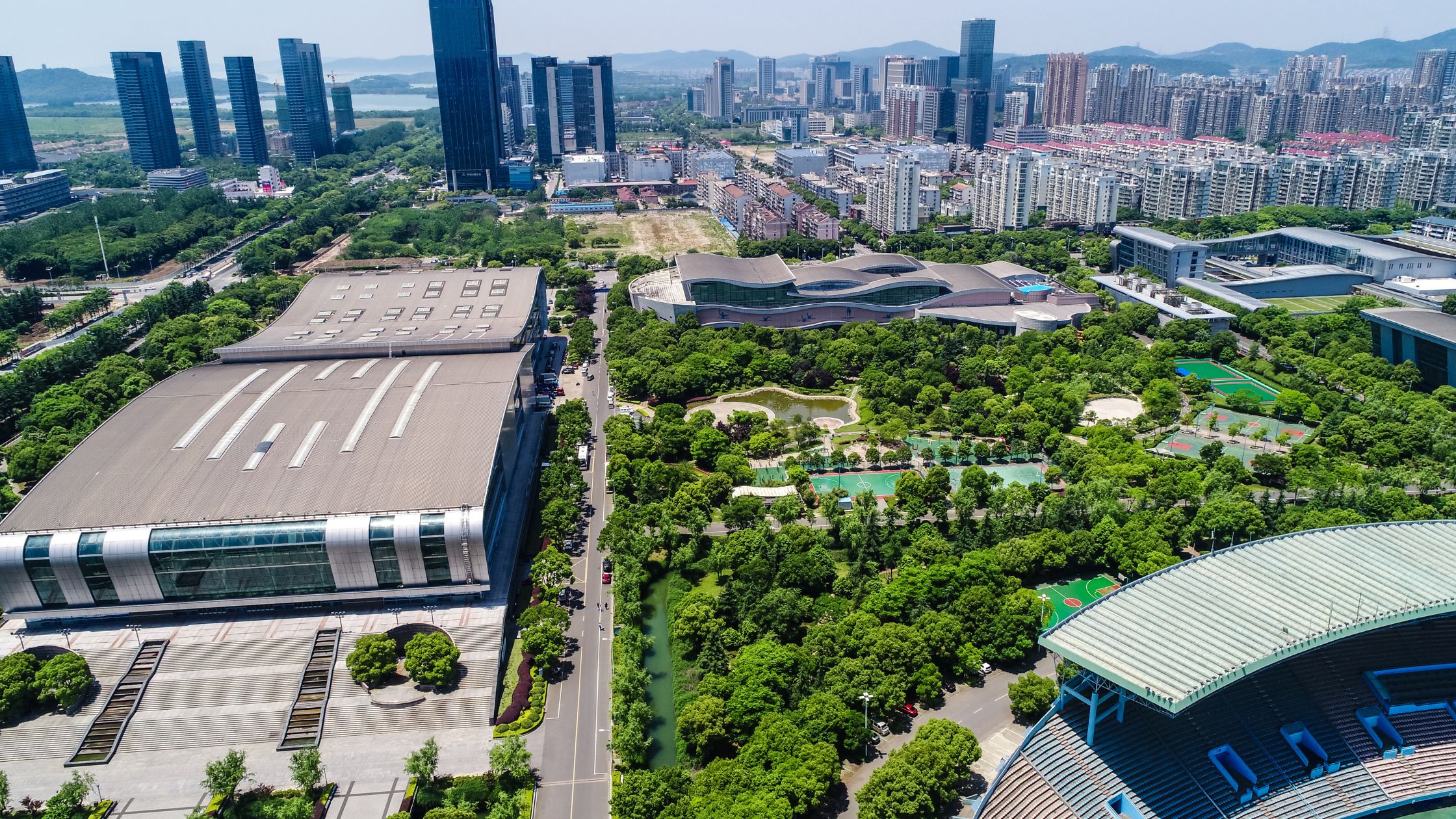According to the official definition, an economic recession occurs when a country’s gross domestic product (GDP) experiences a decline for two consecutive quarters. Applying this definition, the United States officially entered an economic recession in the summer of 2022.
Despite the official definition of a recession based on GDP decline, there are experts who contend that the United States may not be in a recession due to factors such as low unemployment, strong corporate earnings, and Q3 GDP growth.
However, the question of whether the country is currently in a recession may be inconsequential, as many economists predict an impending recession in the near future.
While various segments of the commercial real estate (CRE) industry are adopting defensive strategies to brace for an imminent economic downturn, the industrial real estate market in the United States continues to experience an extraordinary surge.
The seeds of this upward trajectory were sown more than a decade ago as the nation emerged from the depths of the last recession, often referred to as The Great Recession.
However, it is the recent acceleration in the industry’s success that owes much of its impetus to the unprecedented boom in e-commerce, a direct consequence of the global COVID-19 pandemic.
While no investment is entirely immune to the effects of a recession, industrial real estate tends to demonstrate a higher level of resilience compared to other segments of the commercial real estate market.
There are several factors that contribute to the potential impact of a recession on industrial real estate:
1. Demand for Industrial Space:
During a recession, the overall demand for industrial space may experience a temporary decline as businesses scale back operations or postpone expansion plans.
However, certain sectors such as e-commerce, logistics, and distribution tend to remain relatively robust, as consumer purchasing habits shift towards online shopping.
The essential nature of these industries ensures a continued need for industrial facilities, supporting the stability of the sector. The demand for industrial space has been experiencing a significant upswing in recent years, driven by various factors that have transformed the landscape of commerce and logistics.
This increased demand can be attributed to several key drivers:
a. E-commerce Boom:
The exponential growth of e-commerce has been a game-changer for the industrial real estate market. With more consumers opting for online shopping, businesses require ample warehouse and distribution facilities to store and fulfill orders efficiently.
E-commerce giants and smaller retailers alike are expanding their logistics networks, driving the demand for industrial spaces located strategically near population centers to enable faster and cost-effective delivery.
b. Supply Chain Optimization:
Companies are increasingly focused on streamlining their supply chains to improve operational efficiency and reduce costs. This has led to a rise in demand for larger, well-equipped industrial properties capable of accommodating advanced inventory management systems, automation technologies, and efficient transportation access.
Modern industrial spaces with features such as high ceilings, ample truck bays, and proximity to transportation hubs are sought after to support seamless supply chain operations.
c. Last-Mile Delivery:
As consumers’ expectations for fast and convenient delivery continue to rise, the need for last-mile distribution centers located in or near urban areas has become crucial.
Last-mile facilities ensure efficient and timely delivery of products to consumers’ doorsteps. The growing demand for these facilities, often smaller in size but strategically located, has fueled the need for industrial spaces in urban and suburban areas, where real estate availability is limited.
d. Manufacturing and Reshoring:
The resurgence of manufacturing in the United States and the trend of reshoring have also contributed to the demand for industrial space. As businesses seek to reduce dependence on overseas production and enhance supply chain resilience, they are investing in domestic manufacturing capabilities.
This has resulted in increased demand for industrial facilities that can accommodate modern manufacturing processes and support the growth of industries such as technology, advanced manufacturing, and pharmaceuticals.
e. Expansion of Logistics and Third-Party Logistics (3PL) Providers:
The growth of logistics and 3PL providers, who offer warehousing, distribution, and transportation services to businesses, has significantly impacted the demand for industrial space.
These providers require large-scale warehouses and fulfillment centers to cater to their client’s needs and efficiently manage inventory and order fulfillment.
The evolving logistics landscape, driven by the integration of technology and data analytics, has further intensified the demand for modern, technologically advanced industrial spaces.
2. Lease Terms and Tenant Stability:
The stability of industrial real estate investments can be attributed to the lease terms and tenant stability prevalent in the sector. Unlike some other commercial real estate segments, industrial leases often have longer terms, typically ranging from five to ten years or more.
These extended lease durations provide a sense of security for property owners and investors, as they ensure a consistent and reliable stream of rental income over an extended period.
Moreover, industrial tenants tend to exhibit higher stability compared to tenants in other sectors. Many businesses that lease industrial spaces are established and have established themselves as key players in their respective industries.
These tenants often have strong financial positions and operational stability, making them less prone to business closures or lease defaults during economic downturns.
Industrial properties are often tailored to specific operational requirements, such as manufacturing processes, warehousing, or distribution activities.
As a result, tenants invest significant time, effort, and capital in setting up their operations within these spaces. Relocating to a new facility can be a complex and costly process, making tenants more likely to honor their lease agreements and maintain long-term occupancy.
During a recession, industrial tenants may prioritize maintaining their operational continuity over relocating or downsizing their facilities. This can result in a lower likelihood of lease terminations or rent reductions.
Additionally, the essential nature of certain industries that rely on industrial spaces, such as e-commerce, logistics, and manufacturing, provides a level of resilience even in challenging economic times. These industries continue to generate demand for industrial properties, further enhancing tenant stability.
The combination of longer lease terms and tenant stability helps mitigate the potential impact of a recession on industrial real estate investments.
The steady rental income from long-term leases provides investors with a degree of financial security and predictable cash flow, even during economic downturns.
Furthermore, the stability of industrial tenants reduces the risk of prolonged vacancies, minimizing the potential negative effects on property values and overall investment performance.
3. Diversification and Flexibility:
Diversification and flexibility are key strengths of industrial real estate that contribute to its resilience during challenging economic times. The sector encompasses a diverse range of property types, such as warehouses, manufacturing facilities, distribution centers, and logistics hubs.
This broad spectrum of industrial properties allows investors to spread their risk across multiple industries and market segments. By diversifying their investments across various types of industrial properties, investors can reduce their exposure to industry-specific risks.
For example, if one sector experiences a downturn, such as traditional manufacturing, other sectors like e-commerce fulfillment centers may continue to thrive. This diversification helps stabilize income streams and provides a measure of protection against market fluctuations.
Additionally, industrial properties offer a high degree of flexibility. They can be easily repurposed or reconfigured to accommodate changing tenant needs. This adaptability is particularly valuable during economic downturns when tenant requirements may shift.
For instance, a warehouse originally designed for specific use can be modified to serve as a distribution center or a last-mile delivery hub. The ability to quickly respond to market demands enhances the resilience of industrial real estate investments, as properties can be adjusted to align with evolving tenant preferences and industry trends.
4. Supply and Demand Dynamics:
The supply and demand dynamics in the industrial real estate market can act as a buffer against the impact of a recession.
Across many markets, there is an ongoing gap between the supply of industrial properties and the demand for them. This discrepancy creates favorable conditions such as higher rental rates and limited vacancies.
The scarcity of available industrial spaces ensures a steady flow of rental income and helps maintain property values.
The persistent gap between supply and demand in the industrial sector is often driven by several factors. These include zoning restrictions, limited availability of suitable land, and the time-consuming process of constructing or repurposing industrial facilities.
As a result, industrial real estate investments tend to enjoy a level of stability during economic downturns. However, it is important to note that the extent of the impact will depend on the severity and duration of the recession, as well as market-specific factors.
Local economic conditions, industry composition, and geographical factors can influence the performance of industrial real estate during a downturn.
In conclusion, while a recession may have some impact on the industrial real estate sector, its inherent resilience, diversified tenant base, and adaptability position it as a relatively stable investment option compared to other commercial real estate segments.
Investors should conduct thorough research, consider market conditions, and seek professional advice to make informed decisions based on their specific investment goals and risk tolerance.





